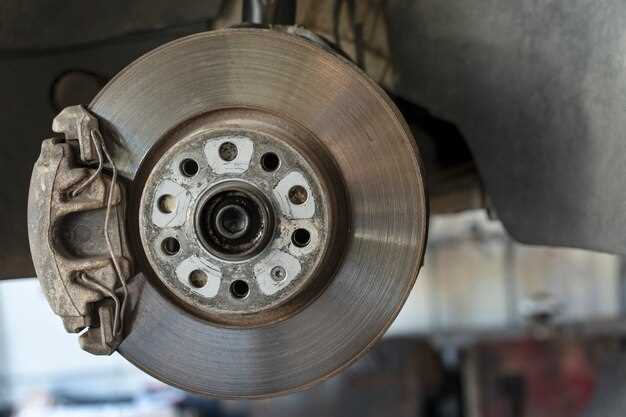
In the world of motorsports, every millisecond counts. One of the most critical components that can significantly influence your lap times is the brake system. Upgrading your brake system is not just about improving stopping power; it’s about optimizing your entire racing experience. A well-designed brake kit can provide the reliability and performance needed to enhance your control on the track.
When considering a brake upgrade, it’s essential to focus on the right components that suit your driving style and vehicle dynamics. A comprehensive brake kit typically includes high-performance rotors, pads, and calipers, each designed to withstand the rigorous demands of competitive racing. By investing in a quality kit, you not only improve your vehicle’s braking efficiency but also minimize brake fade, ensuring consistent performance across multiple laps.
Moreover, an upgraded brake system can lead to shorter stopping distances, allowing you to approach corners faster and exit with greater speed. This capability can be the difference between winning and losing in close races. In this article, we will explore the various options available for upgrading your brake system, helping you make informed decisions to achieve your best lap times.
Choosing the Right Brake Kit for Your Vehicle Model
When looking to enhance your vehicle’s performance, selecting the appropriate brake kit is crucial for achieving faster lap times. The right kit not only improves stopping power but also ensures stability and handling during aggressive driving. Start by considering your vehicle model, as compatibility is essential. Brake kits are often designed specifically for certain makes and models, ensuring optimal fitment and effectiveness.
Next, evaluate your driving style and the conditions in which you typically operate your vehicle. For track days or high-performance driving, you may need a brake kit that features larger rotors and premium pad materials. These components can handle higher temperatures and provide better fade resistance, essential for maintaining performance over long sessions.
Additionally, examine the type of braking system your vehicle currently has. Upgrading from a stock brake system to a performance kit may include enhancements such as slotted or drilled rotors, which improve cooling and reduce braking distances. Investigating whether a big brake kit, which includes larger calipers and rotors, is appropriate for your needs can significantly impact performance.
Material quality is another important consideration. High-performance brake pads made from ceramic or semi-metallic compounds often provide superior grip and longevity. These materials are designed to withstand extreme conditions, making them ideal for racing scenarios.
Lastly, seek out reputable brands that offer brake kits tailored to your vehicle model. Brands with a history of performance success can provide the assurance that you are making a wise investment towards enhancing your brake system. Don’t forget to read reviews and seek advice from fellow enthusiasts to ensure you select the best option for your needs.
How Upgrading Brake Pads and Rotors Improves Performance

Upgrading your brake pads and rotors is a crucial step in enhancing the overall performance of your vehicle, especially for those seeking faster lap times on the track. Performance-oriented brake pads are designed with advanced materials that provide better grip and increased friction. This results in shorter stopping distances, allowing drivers to confidently enter and exit corners at higher speeds.
Rotors also play a significant role in braking performance. Upgrading to high-performance rotors can improve heat dissipation, reducing the risk of brake fade during intense driving conditions. Such rotors are often slotted or drilled, which increases airflow and enhances the braking response. This means your vehicle can maintain consistent performance under heavy braking, a key factor in achieving better lap times.
When paired together as a brake kit, upgraded pads and rotors create a synergistic effect that maximizes braking efficiency. A well-matched kit ensures that the components work seamlessly, providing reliable performance without compromise. Additionally, better performance from your braking system translates to increased driver confidence, allowing for more aggressive driving and improved lap times.
In summary, investing in upgraded brake pads and rotors is essential for any performance enthusiast. Enhanced grip, superior heat management, and a cohesive brake kit will fundamentally improve your vehicle’s braking capabilities, directly impacting your speed and performance on the track.
Installation Tips for Maximum Benefit from Your Brake System Upgrade

Installing a new brake kit can dramatically improve your vehicle’s performance, but proper installation is key to achieving the maximum benefits. Follow these essential tips for a successful upgrade.
1. Gather the Right Tools and Components
Before you begin, ensure you have all necessary tools at hand. This typically includes a jack, jack stands, wrenches, and a torque wrench. Also, double-check that your brake kit includes all components such as calipers, rotors, and pads. Missing parts can lead to installation delays or compromised safety.
2. Study the Manufacturer’s Instructions
Each brake kit may have unique installation requirements. Carefully read the manufacturer’s instructions to understand the specific steps needed for your kit. This guidance can help avoid common pitfalls during installation.
3. Prepare the Vehicle
Start by safely elevating your vehicle using a jack and securing it with jack stands. Ensure the car is stable before proceeding with any removal of brake components. Remove the wheels to grant access to the braking system.
4. Inspect Existing Components
Before installing new parts, inspect existing brake components for wear or damage. Replace any worn items such as brake lines, fluids, or hardware to ensure optimal performance and longevity of the upgrade.
5. Follow Proper Torquing Procedures
When installing your new brake kit, adhering to the specified torque settings is crucial. This ensures that components are securely fastened, preventing any movement that could compromise functionality. Use a torque wrench to apply the manufacturer’s recommended settings.
6. Bleed the Brakes
After installing the new kit, it’s essential to bleed the brake system. This removes any air trapped in the brake lines, which can lead to spongy feelings during braking. Follow proper bleeding procedures for your specific brake setup, ensuring smooth brake function.
7. Test Your Brakes
Once installation is complete, conduct a test on your brakes in a safe and controlled environment. Start with low-speed applications to feel the responsiveness and gradually increase speed. If there are any unusual noises or sensations, revisit the installation process to diagnose potential issues.
8. Break-In Period
After installation, your new brake kit may require a break-in period, commonly referred to as bedding. This involves a series of controlled stops from various speeds to transfer material from the brake pads to the rotors, enhancing performance and longevity. Refer to the manufacturer’s guidelines for the optimal break-in procedure.
By following these installation tips, you can maximize the benefits of your brake system upgrade, ensuring improved performance and safety on the track.
